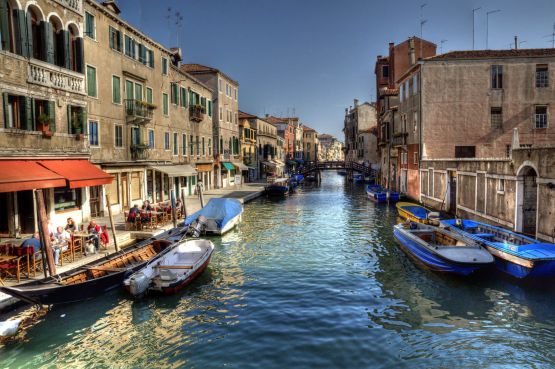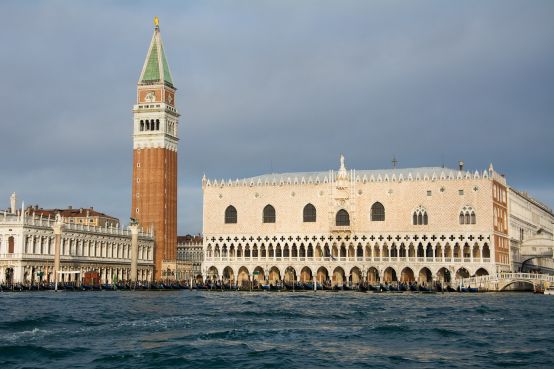Answer: Doge’s Palace in Venice
Originally built in the 10th-11th century, this Venetian Gothic style palace is one of the most popular landmarks in the city of Venice. Once the residence of the Doge (or leader) of Venice, this palace transformed into a museum in 1923 and can be viewed by the public in present day.
The Origins
In 810, Doge Angelo Partecipazio moved the seat of government from the Malamocco to the area of Rivoalto (now, Rialto). This decision was made through an accumulation of events; most importantly, the fall of the Western Roman Empire and the Doge’s allegiance with the Byzantine emperor. At this time, the Venetian Doge was instructed to oversee local affairs, which paved the way for Venice independence.
Buildings, Fires and Jails
In the 10th-11th century, various buildings were constructed that served a number of purposes, including public offices, courtrooms, prisons and the Doge’s apartments. After a fire that partially destroyed the Palace, reconstruction works were undertaken that dramatically changed the look and feel of the building. In the 14th century, extensions and renovations were once again performed. The Doge’s Palace was bursting with change.
After a series of construction plans (and another fire), the 17th century was witness to a dramatic change of decor as the Renaissance had a significant impact on aesthetics. With a marble facade and blind arches, the interior and exterior of this Palace reflected the design and decor of the century.
The Fall of the Venetian Republic
The Doge’s Palace was the heart and soul of the Venetian Republic. After the Republic’s fall in 1797, the role of the Palace dramatically changed. From 1797 to 1866, Venice was subject to both French and Austrian rule. Over this period, various administrative offices and cultural institutions had a significant impact on the Doge’s Palace. Eventually, in 1866, Venice became part of a united Italy and the Doge’s Palace was back home.
The Secrets
Through the construction and demolitions of the Doge’s Palace, many secrets and questionable activities took place. One of the most famous ‘secrets’ of the Doge’s Palace was the Council of Ten, or the ‘Ten’, which was one of the major governing bodies from 1310 to 1797. Although the Council was tasked with maintaining the security of the Republic, it enjoyed almost unlimited authority over all governing affairs. In particular, the Council of Ten managed military affairs, intelligence services and handled legal matters and enforcement. Essentially, this Council was responsible for virtually every activity within the Republic of Venice.
The Doge’s Palace was also home to dark secrets. In the Reggente alla Cancelleria (Regent to the Chancellery), visitors can find the Torture Room and the Piombi (‘the leads’). This area was home to political prisoners and contained cells for those on short sentences. This room (and area) of the Doge’s Palace was certainly not a place one would ever wish to see.
The Doge’s Palace Today
The Doge’s Palace is witness to hundreds of thousands of visitors on a yearly basis. With in-depth tours and public viewings available, this former seat of the Venetian Government is a must-see for any visitor to Venice.
Thinking of visiting Venice? Be sure to connect with us and learn more about this incredible Palace with our expert, licensed tour guides.













Comments